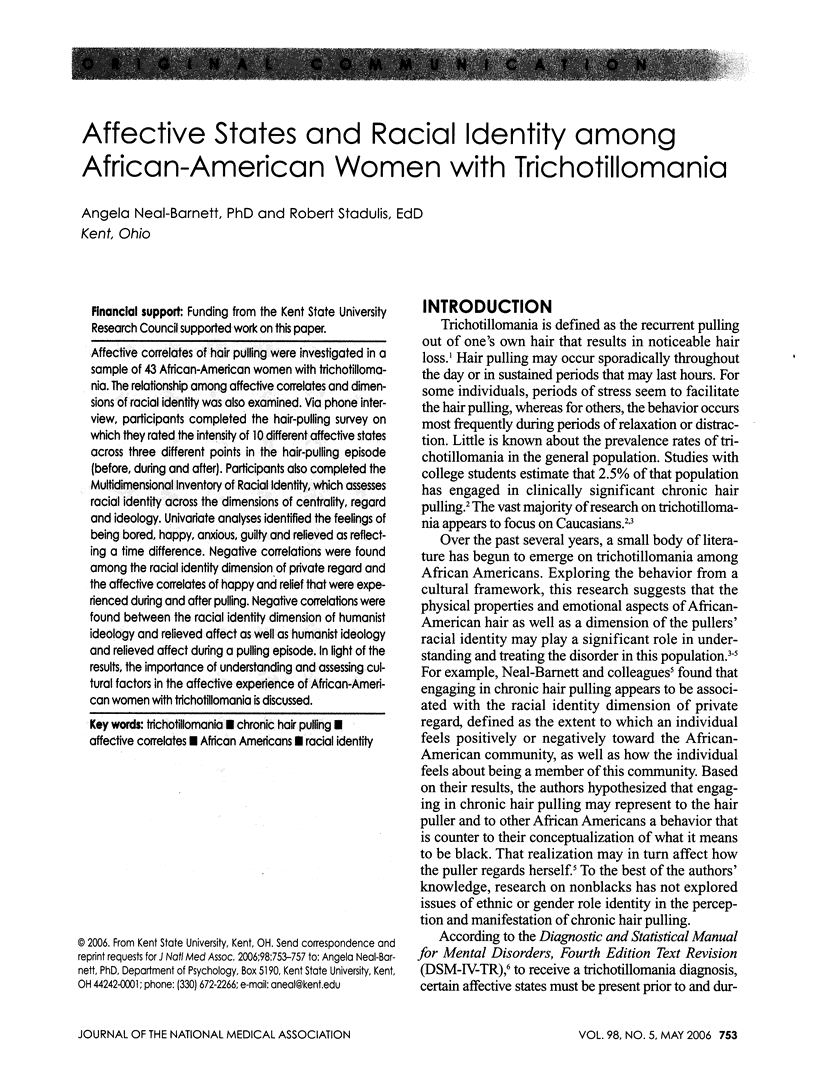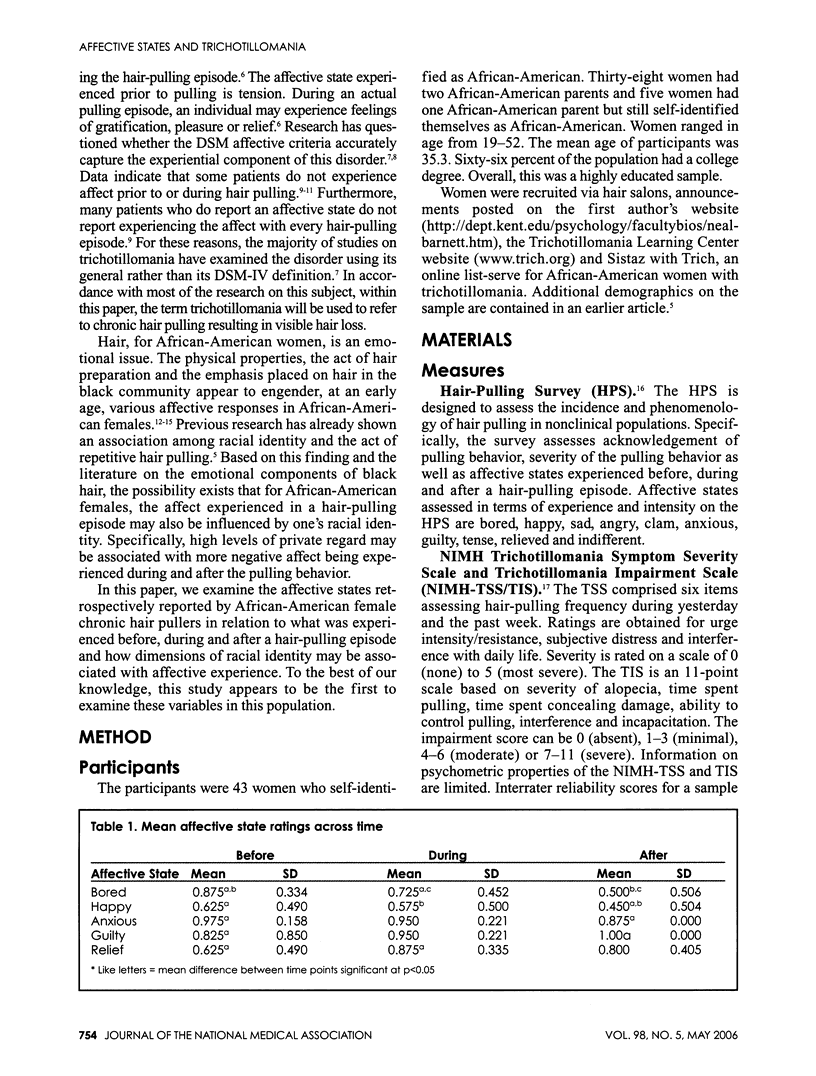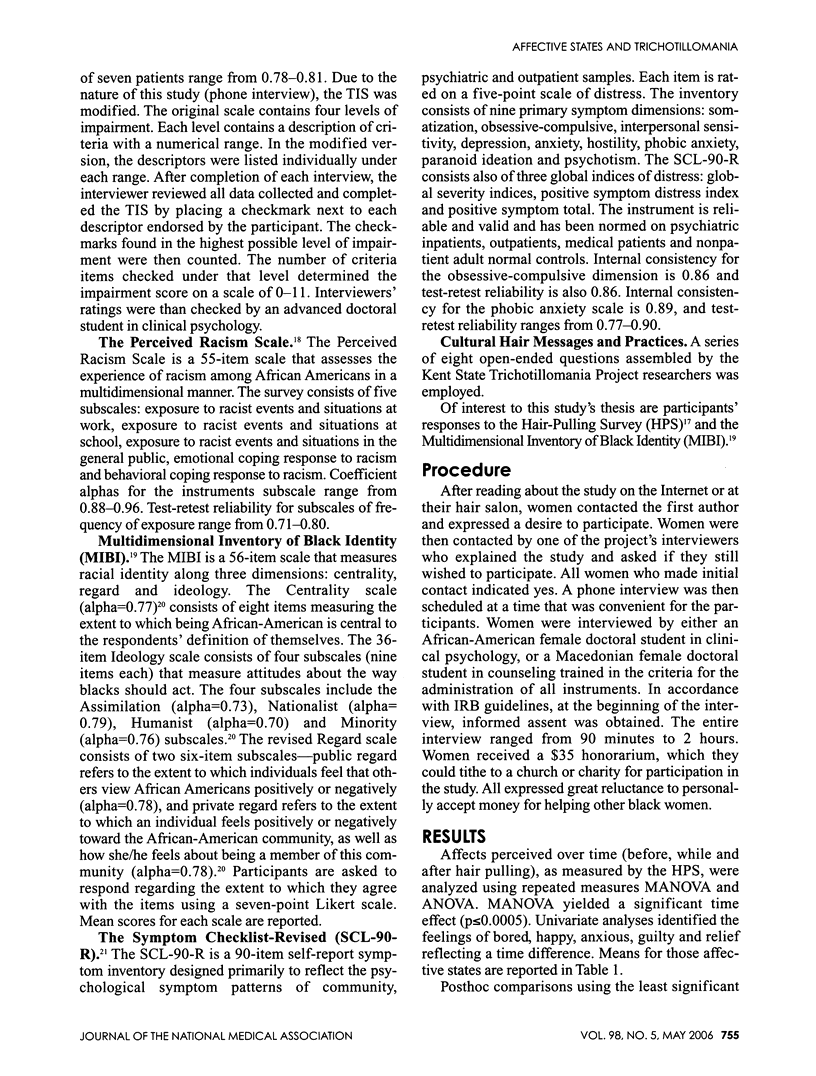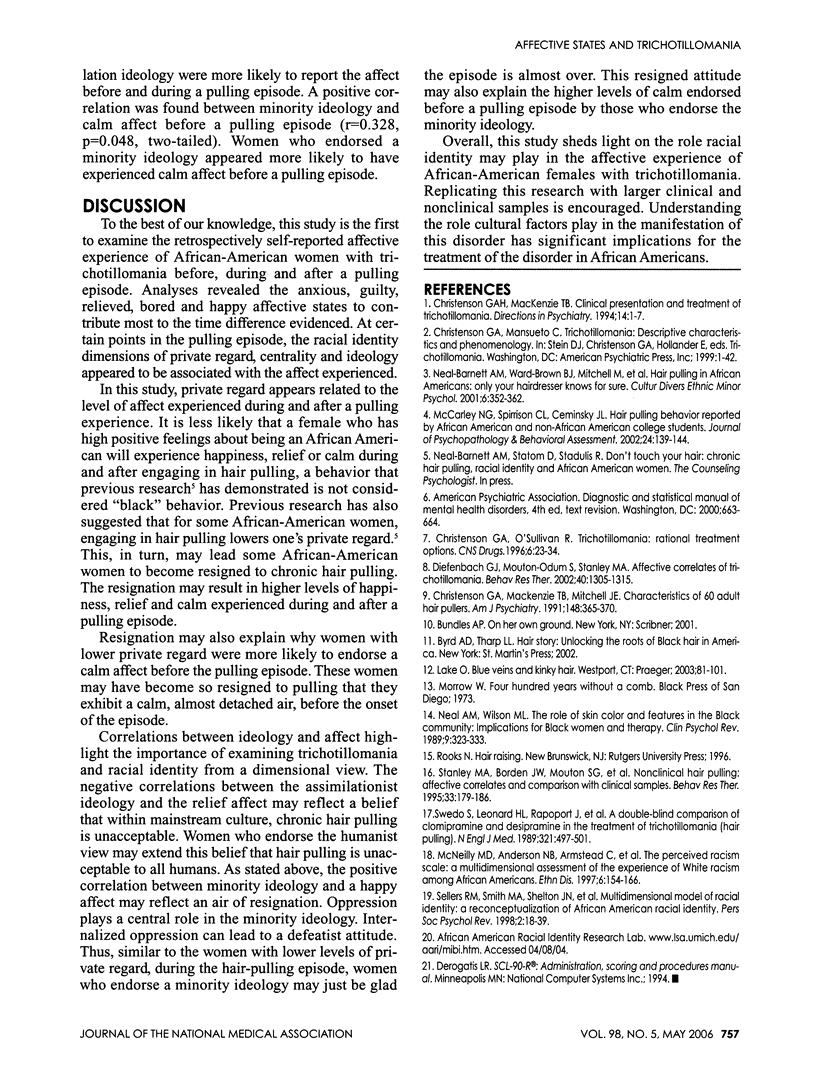Abstract
Affective correlates of hair pulling were investigated in a sample of 43 African-American women with trichotillomania. The relationship among affective correlates and dimensions of racial identity was also examined. Via phone interview, participants completed the hair-pulling survey on which they rated the intensity of 10 different affective states across three different points in the hair-pulling episode (before, during and after). Participants also completed the Multidimensional Inventory of Racial Identity, which assesses racial identity across the dimensions of centrality, regard and ideology. Univariate analyses identified the feelings of being bored, happy, anxious, guilty and relieved as reflecting a time difference. Negative correlations were found among the racial identity dimension of private regard and the affective correlates of happy and relief that were experienced during and after pulling. Negative correlations were found between the racial identity dimension of humanist ideology and relieved affect as well as humanist ideology and relieved affect during a pulling episode. In light of the results, the importance of understanding and assessing cultural factors in the affective experience of African-American women with trichotillomania is discussed.
Full text
PDF




Selected References
These references are in PubMed. This may not be the complete list of references from this article.
- Christenson G. A., Mackenzie T. B., Mitchell J. E. Characteristics of 60 adult chronic hair pullers. Am J Psychiatry. 1991 Mar;148(3):365–370. doi: 10.1176/ajp.148.3.365. [DOI] [PubMed] [Google Scholar]
- Diefenbach G. J., Mouton-Odum S., Stanley M. A. Affective correlates of trichotillomania. Behav Res Ther. 2002 Nov;40(11):1305–1315. doi: 10.1016/s0005-7967(02)00006-2. [DOI] [PubMed] [Google Scholar]
- McNeilly M. D., Anderson N. B., Armstead C. A., Clark R., Corbett M., Robinson E. L., Pieper C. F., Lepisto E. M. The perceived racism scale: a multidimensional assessment of the experience of white racism among African Americans. Ethn Dis. 1996 Winter-Spring;6(1-2):154–166. [PubMed] [Google Scholar]
- Neal-Barnett A. M., Ward-Brown B. J., Mitchell M., Krownapple M. Hair pulling in African Americans--only your hairdresser knows for sure: an exploratory study. Cultur Divers Ethnic Minor Psychol. 2000 Nov;6(4):352–362. doi: 10.1037/1099-9809.6.4.352. [DOI] [PubMed] [Google Scholar]
- Sellers R. M., Smith M. A., Shelton J. N., Rowley S. A., Chavous T. M. Multidimensional model of racial identity: a reconceptualization of African American racial identity. Pers Soc Psychol Rev. 1998;2(1):18–39. doi: 10.1207/s15327957pspr0201_2. [DOI] [PubMed] [Google Scholar]
- Swedo S. E., Leonard H. L., Rapoport J. L., Lenane M. C., Goldberger E. L., Cheslow D. L. A double-blind comparison of clomipramine and desipramine in the treatment of trichotillomania (hair pulling) N Engl J Med. 1989 Aug 24;321(8):497–501. doi: 10.1056/NEJM198908243210803. [DOI] [PubMed] [Google Scholar]


